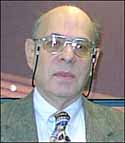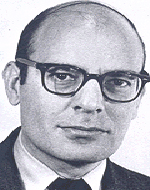A web site full of stuff that should be useful
| AS Psychology |
| Core Studies |
| Links |
| Course Content |
| Exam Questions |
| Psychological Investigation |
| Forum |
| Glossary |
| About this site |
|
|
![]()
The Schachter and Singer Page
|
Below is a very brief summary of the Schachter and Singer study. You will need to use the more detailed summary here to revise for the exam. You can also find all of the past exam questions on Schachter and Singer's study here.
Here is a
multi-choice quiz
|
Here are some comprehension questions.
Humour can reduce the
emotional impact of anxiety-provoking situations – for example;
|
||||||||||
|
Schachter and Singer
developed the two-factor theory of emotion. The two-factor theory
suggests that emotion comes from a combination of a state of arousal and
a cognition that makes best sense of the situation the person is in.
For example, the two-factor theory of emotion argues that when people
become aroused they look for cues as to why they feel the way they do. The aim of the
experiment was to test the two-factor theory of emotion. 1. If a person experiences a state of arousal for which they have no immediate explanation, they will describe their emotions in terms of the cognitions available to them at the time.
2. If a person
experiences a state of arousal for which they have an appropriate
explanation (e.g. ‘I feel this way because I have just received an
injection of adrenalin’), then they will be unlikely to describe
their emotions in terms of the alternative cognitions available. 3. If a person is put in a situation, which in the past could have made them feel an emotion, they will react emotionally or experience emotions only if they are in a state of physiological arousal. The participants were 184 male college students, taking classes in introductory psychology at Minnesota University. As soon as the
participant arrived, he was taken to a private room by the experimenter
and told that the aim of the experiment was ‘to look at the effects of
vitamin injections on visual skills’, and was asked if he would mind
having an injection of ‘Suproxin’ (made up name). 184 out of 195
participants agreed to the injection. They were given an injection (by
a doctor) of either adrenalin (epinephrine) or a placebo, which was
actually a saline solution, which has no side effects at all. The
effects of the adrenalin are an increase in blood pressure, heart rate,
blood sugar level, respiration rate, and blood flow to the muscles and
brain, with an accompanying decrease in blood flow to the skin. This is
often experienced as palpitations, tremors, flushing and faster
breathing. The effects begin after three minutes and last from ten
minutes to an hour. The participants were
then put in one of four experimental conditions:
1. Adrenalin Ignorant -
participants were given an adrenalin injection and not told of the
effects of the drug.
2. Adrenalin Informed -
participants were given an adrenalin injection and warned of the ‘side
effects’ of the drug (hand shake, heart pounding, dry mouth etc.). The
participants were therefore prepared for the effects of the adrenalin
(although they thought they were to do with the suproxin).
3. Adrenalin Misinformed
- participants were given an adrenalin injection and told to expect side
effects but were told these would be numb feet and headache. These
participants would, therefore, not be expecting the effects of the
adrenalin.
4. Control Group -
Placebo - participants were given an injection that would have no effect
and were given no instructions of what to expect. Participants were then allocated to either the euphoria condition or the anger condition. In the euphoria
situation In the anger situation The conditions in the
Schachter and Singer experiment
The researchers then
made observational measures of emotional response through a one-way
mirror, and also took self-report measures from the participants. In the euphoria condition the misinformed participants were feeling happier than all the others. The second happiest group was the ignorant group. This demonstrates that these participants were more susceptible to the stooge because they had no explanation of why their bodies felt as they did. The informed group felt the least happy because they understood why they felt as they did. In the anger condition,
the ignorant group felt the angriest. The second angriest group was the
placebo group. The least angry group was those who were informed.
Again this shows that participants were more susceptible to the stooge
because they had no explanation of why their body felt as it did. Schachter and Singer
argue that all three propositions were supported. |
|||||||||||

